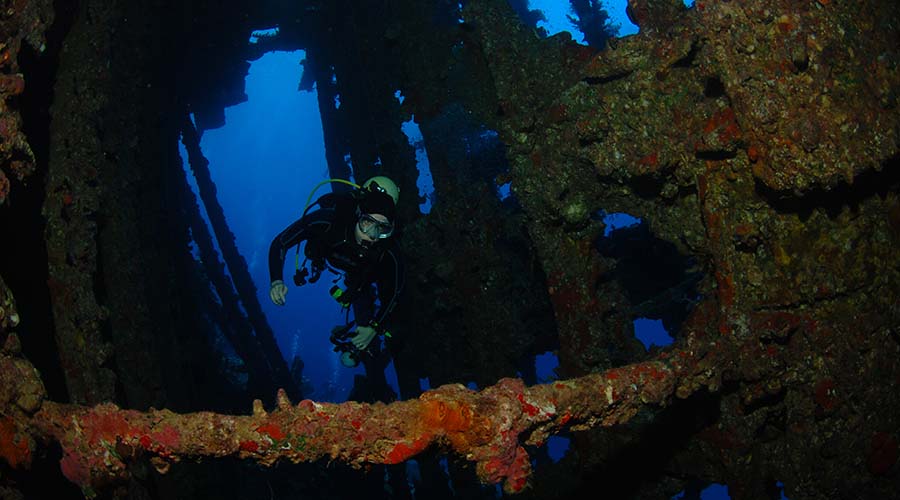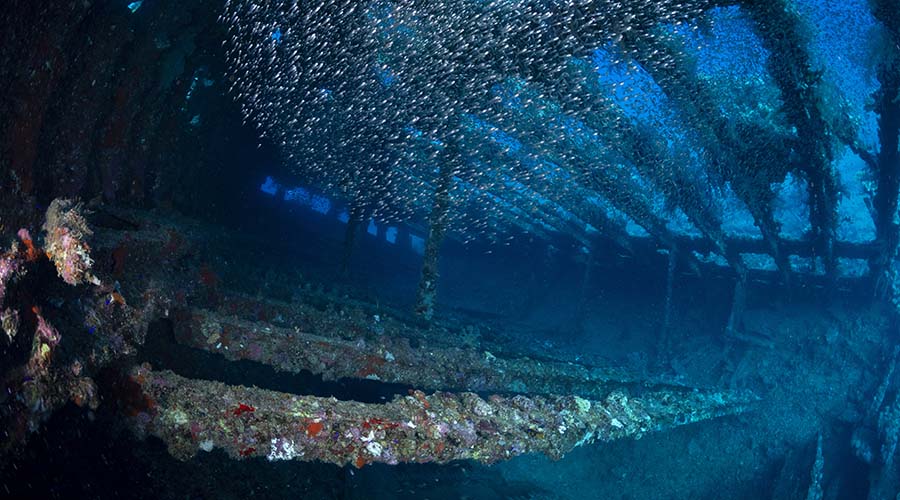Carnatic Wreck Hurghada information tours, prices and online booking
Carnatic Wreck Hurghada indeed is one of the most famous Shipwreck diving spots in the Red Sea. In fact, the ship went to the bottom in two separate halves. Those two halves then fell together on the seabed. It is just as they might have done had the ship gone down as one piece. In fact, it is the most incredible part of this entire shipwreck. Today Carnatic found at the base of the Reef and lies parallel to it. It is on its port side with the bows facing east. There are three distinct elements to this dive; The fore and aft sections are still largely intact and joined together by the most damaged area. It is where the ship broken and the engine room located. It is 25-27m to the seabed and 18-20m to the upper (starboard) side throughout the dive.
The wooden superstructure and planking has long-since rotted away – leaving a steel hull held together by iron supports and cross-members. With the decking gone, divers are able to explore down to two deck levels within the wreck itself. At the Bows is the large copper ring that once held the bowsprit. This lies just behind the curved metal bowsprit support – underneath which was once the figurehead. When viewed from ahead, it is easy to see the Carnatic fine, sleek lines – even today. From the Bows, the ship gently widens to the main body. It is where, on both sides, lifeboat davits found and all swung out. From here the diver can enter the vessel. He can swim between the iron supports – a fascinating encounter with a vessel built in 1862!.
More information about Carnatic Wreck Hurghada:
Emerging from the forward section, the diver then encounters the most severely damaged part of the wreck. Although it is really a pile of scrap metal, it provides plenty of scope for investigation. After all, there is a “4 cylinder compound inverted engine” still in there – somewhere. For most divers, the stern is the most exciting and interesting part of the entire wreck. Similar to the Bows, lifeboat davits found on both sides and the diver is able to swim into the wreck down to two levels. Deep inside there is still some very old barrels.
To discover the finest aspect of the entire vessel, the diver must exit the wreck and swim round to the stern. This is a finely molded stern with a single row of seven square windows facing aft. It really is reminiscent of something from Nelsons day. It provides a fascinating insight into how traditional styles of building wooden ships adapted for steel construction. Below the windows, the stern curves gently downwards and inwards to reveal a magnificent rudder. The one features that certainly was never a part of that earlier era – a large three-bladed propeller.
Further information about the site:
In fact, it is fairly safe to assume the Carnatic will remain pretty much as it is for the foreseeable future. It is well colonized by coral, soft corals and its own indigenous population of Reef Fishes. The reef in fact includes Grouper and Lionfish. Altogether, this is probably one of the finest examples of a ship of its time to find underwater anywhere in the world. For that alone, it indeed is well worth the visit. Should you do so, perhaps you will spare a thought for those who lost their lives.
















